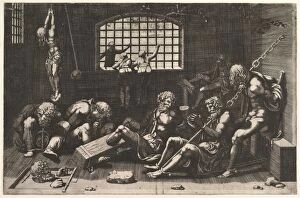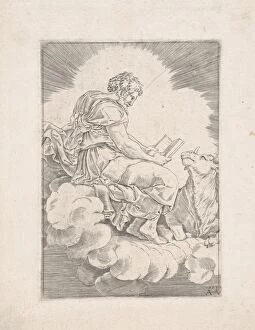After Giulio Romano Collection (#2)
"After Giulio Romano: A Journey Through Allegory and Emotion" Step into the world of Giulio Romano
All Professionally Made to Order for Quick Shipping
"After Giulio Romano: A Journey Through Allegory and Emotion" Step into the world of Giulio Romano, an Italian Renaissance artist known for his captivating and thought-provoking works. In this collection, we are transported to various scenes filled with symbolism and profound meaning. One piece that catches our attention is "Mocking Prisoners, " a powerful engraving from ca 1540. Here, a sick man lies prostrate on his bed, surrounded by allegorical figures representing the struggles of illness. The artist skillfully captures the vulnerability and despair that accompanies sickness. Moving on to another masterpiece, "Cupid Eagle" takes us on a journey through love's complexities. Created in 1652 as an etching, it portrays Cupid alongside an eagle in its first state. This enchanting artwork explores the intertwining nature of love and power. In "Mary Magdalene Carried to Heaven, " created in the mid-16th century, we witness a poignant scene where Mary Magdalene ascends towards heaven. The artist beautifully depicts her ethereal journey, evoking feelings of hope and spiritual transcendence. The allegorical theme continues with "Allegory Birth. " Crafted in 1558 as an engraving, it showcases new life emerging amidst symbolic elements. This artwork invites contemplation about rebirth and transformation. "Hercules Nemean Lion" presents Hercules grasping the lion's shoulders with immense strength. This depiction highlights Hercules' heroic labors while symbolizing courage overcoming adversity – a timeless message resonating even today. On a more somber note, "Death Procris Cephalus" portrays mourning after death righteously surrounded by grief-stricken figures. The emotional intensity captured here reminds us of life's transient nature and forces us to reflect upon mortality itself. Prisons become another recurring motif within Romano's work.











